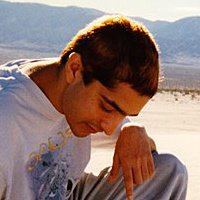Research
Samudrala's research focuses on proteomics and he has regularly taken part in the CASP protein structure prediction challenges since their inception. His work with Moult and Levitt are among the first improvements of blinded protein structure prediction in both comparative and template free modelling categories. [7] [8] [9] With Moult, he was the first to develop and apply probabilistic and graph-theoretic methods to accurately predict interactions for comparative modelling of protein structures. [10] [11] With Levitt, he developed a combined hierarchical approach for de novo structure prediction [12] as well as the Decoys 'R' Us database to evaluate discrimination functions. [13]
At the University of Washington, Samudrala's research group developed a series of algorithms and web server modules to predict protein structure, [14] function, [15] and interactions [16] known as Protinfo. [17] [18] The group then applied these methods to organismal proteomes, creating a framework known as the Bioverse [19] [20] for exploring the relationships among the atomic, molecular, genomic, proteomic, systems, and organismal worlds. The Bioverse framework performs analyses and predictions based on genomic sequence data to annotate and understand the interaction of protein sequence, structure, and function, both at the single molecule as well as at the systems levels. The framework was used to annotate the finished rice genome sequence published in 2005. [21]
Samudrala's group has also applied these methods to drug discovery, resulting in the Computational Analysis of Novel Drug Opportunities (CANDO) platform which ranks therapeutics for all indications by performing multiscale analytics of compound-proteome interaction signatures. [22] [23] [24] [25] A combination of novel docking methods and/or its use in the CANDO platform has led to prospectively validated predictions of putative drugs against dengue, [26] [27] dental caries, herpes, lupus, and malaria [28] along with indication-specific collaborators. [29]
Other areas of application include predicting HIV drug resistance/susceptibility; [30] nanobiotechnology, where small multifunctional peptides that bind to inorganic substrates are designed computationally; [31] [32] [33] and interactomics of several organisms, including the Nutritious Rice for the World (NRW) project. [34]
This page is based on this
Wikipedia article Text is available under the
CC BY-SA 4.0 license; additional terms may apply.
Images, videos and audio are available under their respective licenses.
